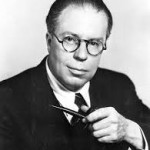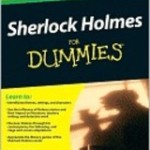A Scion Society of The Baker Street Irregulars

Data! Data! Data! – The Retired Colourman
“‘Data! Data! Data!‘ he cried impatiently. ‘I can’t make bricks without clay.’”
– The Adventures of The Copper Beeches (COPP)

This column is composed of material (Data!) developed for a short course called Appreciating Sherlock Holmes that I teach twice a year in the Community Education Life Enrichment Program for a local community college. It is composed of “points of information” that are common to many / most / all of the 60 Canonical stories.
The information here has been researched by me or borrowed / stolen from many efforts of other Sherlockians.
HERE GOES This month’s story The Adventure of the Retired Colourman
CHRISTOPHER MORLEY SAID . . .
“When Holmes ate two hard-boiled eggs for breakfast it meant he was on someone’s trail. Not satisfied with Dr. Watson’s preliminary investigation Holmes went himself to see why Mr. Amberly had been painting his strong room at the time when he would more properly have been secluded in grief and dismay. But Mr. Amberly was a chess player, ‘the mark of a scheming mind.’ The history of Sherlock Holmes ends, as it began, with the official police getting the credit.”
 DUMMIES SHORT SUMMARY (From Sherlock Holmes for Dummies by Steven Doyle & David Crowder)
DUMMIES SHORT SUMMARY (From Sherlock Holmes for Dummies by Steven Doyle & David Crowder)
“Burglary has always been an alternative profession, had I cared to adopt it,” remarks Sherlock Holmes. It’s a skill he turns to in solving a case of a missing wife and her lover.
PUBLISHING HISTORY
- This is the 58th of the 60 stories published.
- In England, it was published in The Strand Magazine in January, 1927
- In the United States, it was published in Liberty Magazine on December 18, 1926
- It is part of The Casebook of Sherlock Holmes published by John Murray in London and George D. Doran in 1927
- The British illustrator was Frank Wiles and the American illustrator was Frederick Door Steele
HOW MANY WORDS?
According to C. E. Lauderback, 1960 – – found on SHERLOCKIAN.NET website of Chris Redmond, and at 5,559 words RETI has the 2nd most words (#1 is VEIL – 4,499, #56 if NAVL – 12,701)
THE BEST OF SHERLOCK HOLMES (How do Sherlockians rate this story?)
- 1927 – Arthur Conan Doyle did not have it on his list of 12 favorites
- 1959 – The Baker Street Irregulars rated it 54th on list of 60
- 1999 – The Sherlock Holmes Society of London voted it 37th of the 56 short stories
CLASSIFYING THE CASE (From the Wandering Gipsies of Grimpen Mire of Decatur, Alabama)
This case is one of 23 classified as a MURDER and one of 14 where the perpetrator was either killed, arrested, or otherwise satisfactorily handled.
CHRONOLOGICALLY SPEAKING
Doyle was often very vague about stating WHEN the tale took place and included few contemporary references to help. Whether this was done intentionally or unthinkingly, the dating of events in the Canon is a very popular pastime pursued by several of our “scholars” researching and justifying their results to no end. We will again default to William Baring-Gould’s dating of Thursday, July 26 to Saturday, July 30 1898 making it 45th of the 60 stories in time. This would make Holmes 44 and Watson 46.
WHAT ELSE HAPPENED IN THE YEAR 1898?
It is always interesting to see what else in happening at the same time as the stories.
- Battle of Omdurman in Sudan. Kitchner defeats Mahdi and Dervishes, avenges General Gordon’s death.
- Curzon becomes Viceroy of India.
- Introduction of Imperial Penny Postage in Britain.
- Congo railway completed to Stanley Pools.
- First escalator at Harrods.
- University of London Act reorganizes itself as a teaching university.

- USS Maine blows up in Havana Harbor, Spanish-American War begins, Spain defeated at Santiago and Manila. Treaty of Paris ends war, Cuba independent, U.S.A. acquires Philippines.
- Workmen’s Social Democratic Party formed in Russia.
- “Hundred Days of Reform” in China. Deposition of Kuang-Hsu and reinstatement of Dowager Empress, suppression of reform.
- U.S.A. annexes Hawaii.
- End of state of debtor nation for U.S.A., existing since 1783, $500 million foreign investments.
- Work begins on Aswan Dam.
- Zola’s J’Accuse.
- H.G. Wells’ War of the Worlds.
- Oscar Wilde’s Ballad of Reading Gaol.
- Curies discover radium and polonium.
- Pickering, using photography, discovers nine of Saturn’s moons.
- Rudolf Diesel demonstrates his engine, which requires no sparkplugs.
- J. Owens, U.S.A., designs automatic bottle-making machine.
- Marconi establishes wireless communication between Bournemouth and the Isle of Wight.
- Konstantin Tsiolkovski states principles of rocket propulsion.
HOLMES AND WATSON – PERSONAL INFO
Holmes and Watson are in the room at 221B in the start of the story but there is nothing defining if Watson is in residence. Something else for Sherlockians to debate over a brew – or two.
DRAMATIS PERSONAL
A very small cast of forgettable characters.
- JOSIAH AMBERLY, the retired colorman.
- AMBERLY, his wife, 20 years his junior
- RAY ERNEST, a chess playing friend of Mr. Amberly
- BARKER, another private investigator and friendly rival of Holmes.
- MACKINNON, a smart young police officer.
“QUOTABLE SHERLOCK”
All are Holmes addressing Watson except where noted.
- “Exactly, Watson. Pathetic and futile. But is not all life pathetic and futile?”
- “He has been sent on by the Yard. Just as medical men occasionally send their incurables to a quack.”
- “The old story, Watson. A treacherous friend and a fickle wife.”
- “Cut out the poetry, Watson.”
- ‘No of course, it is art for art’s sake with him,”
- “You have missed everything of importance, yet even those things which have obtruded themselves upon your notice give rise to serious thought.”
- “With your natural advantages, Watson, every lady is your helper and accomplice.”
- “It has been done. Thanks to the telephone and the help of the Yard, I can usually get my essentials without leaving this room.”
- Holmes to Amberly – “What did you do with the bodies?”
- Holmes to Amberly – “Things must be done decently and in order.”
- “Amberly excelled at chess – one mark, Watson, of a scheming mind.”
- Inspector McKinnon to Holmes and Watson – “Pooh! What an awful smell of paint!”
- Holmes to Inspector McKinnon about Amberly – “He felt so clever and so sure of himself that he imagined no one could tough him. He could say to any suspicious neighbor, “’Look at the steps I have taken. I have consulted not only the police, but even Sherlock Holmes.’”
HOLMES’ FEE
No mention, but since the client was shown to be the criminal, it is unlikely Holmes got paid. Possibly he had an arrangement with the police, which could account for his allowing them credit for solving the case.
SHERLOCK ON THE BIG SCREEN & THE LITTLE SCREEN
The Adventure of the Retired Colourman has never performed on any screen, any place. ‘nuff said.
SHERLOCK HOLMES IN DISGUISE
The Master of disguise used the deception of being disguised 14 times in 11 of the 60 stories but none were used in this tale.
UNRECORDED CASES (That involved Holmes)
Watson would tease / torture his readers with “I know something you don’t.” Oh my, how Sherlockians love this category. I have in excess of over 150 examples in my collection. This story does have one and it has been done as a pastiche several times.
- The Case of the two Coptic Patriarchs
IS THERE A DOCTOR IN THE HOUSE?
Victorian London, in the Holmes’ time, had approximately 1 doctor for every 100 people. 31 of the 60 tales have a doctor in them. This, of course, does not count Holmes’ Boswell. This listing is by Leslie Klinger in the Winter, 2015 edition of the Baker Street Journal. Whether it was Doyle or Watson, a doctor wrote the story.
In this story there just one doctor was mentioned.
- Ray Ernest – who was murdered by Josiah Amberly; a chess-player
FAINTING IN THE CANON (courtesy of Sherlockian Karen Murdock)
Fainting is extremely common in the Canon, appearing, in some form, in 37 of the 60 tales. In 21 cases someone actually faints. In 22 cases someone almost faints. And in 5 cases someone pretends to faint. In this month’s story no one faints, almost faints, pretends to faint, or even mentions fainting.
HOLMES’S PUBLISHED & PROJECTED WORKS
Sherlockians love this topic and are regularly searching for these items. Holmes mentions published or projected works in 11 of the stories but not in this one.
NEWSPAPERS (Real and Fictional)
Though included in only 20 tales some of our more obsessed Sherlockians love this one. The mentions of newspapers mixes real and fictional. This one is fictional.
- North Surrey Observer
ANNOTATED SHERLOCK
The 60 Sherlock Holmes stories used English as spoken in England from the 1880’s until the 1910’s. Some words are foreign to us today and need a “contemporary translation.” The only such word or phrase in this story is:
- . . . “Where is my Crockford?” meaning Crockford’s Clerical Directory.
WEAPONS (from A Compendium of Canonical Weaponry by Dettman and Bedford)
… “a means by which one contends against another” … utilized in 57 of the 60 tales (all but CREE, 3STU, & YELL) There are several general categories to classify “weapons” that include: firearms, human agents, cutlery, animals, blunt instruments, extortion, toxin, blackmail, and miscellaneous. In our story, which is short, you will find only the following:
- Lethal Gas – Which Josiah Amberly used to murder his wife and her putative lover, Dr. Ray Ernest, after he lured them down into his strong room.
- Poison Pills – Which Amberly tried to commit suicide with, after the discovery of his crime by Holmes.
ODD STUFF
From the pen of Sherlockian in 2008, we find a limerick from Don Dillistone . .
It certainly wasn’t cricket,
But Amberley’s plot was intricate.
It might have worked out
If he’d thought about
Buying one more theatre ticket.
 Frank Mentzel, aka Merridew of Abominable Memory, enjoyed attending the recent Scintillation of Scions X. When not ordering more books about Sherlock Holmes, he can be found outside working in his gardens and yard.
Frank Mentzel, aka Merridew of Abominable Memory, enjoyed attending the recent Scintillation of Scions X. When not ordering more books about Sherlock Holmes, he can be found outside working in his gardens and yard.

Sorry, comments are closed for this post.